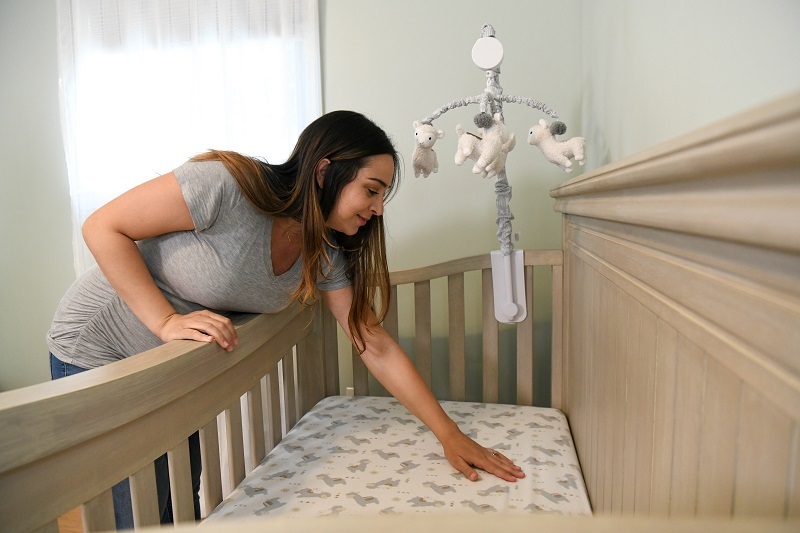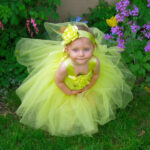Move your baby to a crib when they can roll over or sit up independently. This transition typically occurs between 4 to 6 months.
Transitioning your baby from a bassinet or co-sleeper to a crib is an important milestone. This shift not only provides more space for your growing child but also ensures their safety as they develop new skills. Cribs offer a secure environment, allowing babies to sleep soundly without the risk of rolling out.
Parents often wonder about the best timing for this move. It’s crucial to consider your child’s physical development and sleeping habits. Making this change smoothly can help establish a healthy sleep routine, benefiting both the baby and parents alike. Understanding the signs for transition helps in making informed decisions.
Table of Contents
Introduction To Crib Transition
Crib transition is an important step in your baby’s growth. Moving from a bassinet to a crib can be exciting. It provides more space and comfort for your little one. Understanding the right time for this change helps make the process smooth.
The Significance Of Crib Transition
Crib transition marks a new phase in your baby’s life. It offers several benefits:
- Safety: Cribs are designed to keep your baby secure.
- Comfort: Cribs provide a cozy environment for sleep.
- Independence: Your baby learns to sleep alone.
- Growth: A crib supports your baby’s physical development.
Recognizing the signs for transition is key. Watch for signs of mobility, like rolling over. This indicates your baby may need more space.
Goals For A Smooth Transition
Creating a successful crib transition involves careful planning. Focus on these goals:
- Timing: Choose the right moment for the switch.
- Familiarization: Introduce the crib gradually.
- Comfort: Make the crib cozy with familiar items.
- Routine: Establish a consistent bedtime routine.
Consider these tips for a seamless transition:
| Tip | Description |
|---|---|
| Start with naps | Let your baby nap in the crib first. |
| Use a nightlight | A soft light can soothe your baby. |
| Stay close | Be nearby to comfort your baby during the night. |
Following these guidelines makes the crib transition easier for both you and your baby. Focus on comfort and safety for the best outcome.
Recognizing Baby’s Readiness
Transitioning your baby to a crib is an important step. Recognizing when your baby is ready can make this change smoother. Watch for key signs and consider age factors.
Signs Of Readiness
- Rolling over: If your baby can roll over, it’s a sign.
- Attempting to crawl: Crawling shows increased mobility.
- Outgrowing the bassinet: If your baby is too big for the bassinet, it’s time.
- Sleeping through the night: Consistent sleep patterns indicate readiness.
- Showing independence: Wanting to sleep alone is a positive sign.
Age Considerations
Age plays a crucial role in crib transition. Babies usually transition between 4 to 6 months. Here’s a quick guide:
| Age Range | Readiness Indicators |
|---|---|
| 0-3 Months | Most babies are not ready yet. |
| 4-6 Months | Watch for rolling and crawling. |
| 6-12 Months | Many babies are ready for the crib. |
Consider your baby’s unique development. Every baby grows at their own pace. Trust your instincts during this transition.
Preparing The Environment
Creating a safe and comfortable space is vital for your baby’s transition to a crib. Start by choosing the right crib and ensuring room safety. These steps help your baby feel secure and relaxed.
Choosing The Right Crib
Selecting the perfect crib is essential. Here are some key features to consider:
- Safety Standards: Ensure it meets current safety guidelines.
- Size: Choose a crib that fits your room and space.
- Material: Opt for non-toxic materials free from harmful chemicals.
- Adjustable Mattress Height: Allows for easier access as your baby grows.
- Sturdy Construction: Check for stability and durability.
Consider the following types of cribs:
| Crib Type | Description |
|---|---|
| Standard Crib | Traditional design, usually convertible. |
| Portable Crib | Lightweight, easy to move around. |
| Convertible Crib | Transforms into a toddler bed or daybed. |
Room Safety Essentials
Ensuring room safety is crucial for your baby’s well-being. Follow these tips to create a safe space:
- Remove Clutter: Keep the area tidy and free of hazards.
- Secure Cords: Tuck away blind cords and electrical cords.
- Install Safety Gates: Use gates to block stairs or unsafe areas.
- Check Furniture Stability: Anchor heavy furniture to walls.
- Use Non-slip Rugs: Prevent slipping with secure rugs.
Regularly inspect the room for new hazards as your baby grows. Create a safe and nurturing environment to make the crib transition smooth.

Credit: www.newtonbaby.com
Timing The Transition
Choosing the right time for your baby’s crib transition is crucial. Timing impacts your baby’s sleep quality and comfort. Recognizing the ideal moment can make this change smoother and more successful.
Ideal Timing
Experts recommend transitioning to a crib between 4 to 6 months. At this stage, babies are more adaptable. Here are some signs that indicate readiness:
- Your baby can roll over both ways.
- Your baby shows interest in their surroundings.
- Your baby has outgrown their bassinet.
- Your baby can sleep for longer stretches.
Consider these factors:
| Factor | Importance |
|---|---|
| Age | 4-6 months is ideal. |
| Development | Rolling over is a key skill. |
| Space | Ensure the crib is safe and spacious. |
Avoiding Transition During Major Changes
Timing matters. Avoid transitioning during significant changes. These events can stress your baby:
- Moving to a new home
- Changes in routine
- Introducing a new sibling
- Teething phases
Stressful events can disrupt sleep. A calm environment helps your baby adjust. Choose a stable period for the transition.
Creating A Bedtime Routine
Transitioning your baby to a crib can be challenging. A soothing bedtime routine helps ease this change. It signals to your baby that it’s time to sleep. Establishing a consistent routine promotes better sleep habits.
Elements Of A Soothing Routine
Incorporate calming activities into your routine. Here are some effective elements:
- Warm bath: A bath relaxes your baby before bed.
- Gentle massage: Soft strokes can calm your baby.
- Reading a book: Choose a simple story for quiet time.
- Soft music or lullabies: Use calming sounds to soothe.
- Dim lights: Lowering the lights signals bedtime.
Try to keep the activities short. Each element should last about 5-10 minutes. Choose what works best for you and your baby.
Consistency Is Key
Stick to the same routine every night. Babies thrive on predictability. A consistent bedtime helps them feel secure.
Here are some tips for maintaining consistency:
- Set a regular bedtime.
- Follow the same order of activities each night.
- Use the same soothing phrases during bedtime.
- Limit screen time an hour before bed.
- Keep the environment quiet and calm.
Consistency builds positive sleep habits. Over time, your baby will associate the routine with sleep. This leads to smoother crib transitions.

Credit: takingcarababies.com
Familiarizing Baby With The Crib
Transitioning to a crib can be exciting yet challenging. It’s essential to make your baby comfortable with the new sleeping space. This section covers practical tips to help your little one adjust smoothly.
Daytime Acclimation
Start introducing your baby to the crib during the day. This helps create positive associations. Follow these steps:
- Place your baby in the crib for short periods.
- Allow them to explore the crib with toys.
- Stay close to provide comfort and reassurance.
- Make the crib a cozy and inviting space.
Use soft blankets and familiar items. This will help your baby feel secure. Gradually increase the time spent in the crib. Aim for 15 to 30 minutes each day.
Using The Crib For Naps
Utilize the crib for naps to reinforce its purpose. Follow these tips:
- Create a consistent nap schedule.
- Establish a calming pre-nap routine.
- Use gentle lullabies or white noise for relaxation.
- Ensure the room is dimly lit and quiet.
Keep the environment comfortable. The right temperature promotes better sleep. Monitor your baby’s comfort during nap times.
By incorporating naps in the crib, your baby will feel secure. This will ease the transition to overnight sleeping in the crib.
Comfort Items And Sleep Associations
Transitioning to a crib can be a big change for your baby. Comfort items and sleep associations play a key role in this process. They help your baby feel secure and relaxed in their new sleeping environment.
Safe Comfort Items
Choosing the right comfort items is essential for a smooth transition. Here are some safe options:
- Soft blankets – Lightweight and breathable fabrics are best.
- Stuffed animals – Choose small, safe toys without small parts.
- Sleep sacks – These can replace loose blankets for safety.
- Pacifiers – They can soothe your baby and promote sleep.
Ensure all items meet safety standards. Avoid anything that poses a choking hazard.
Weaning Off Sleep Associations
Sleep associations can make it hard for your baby to sleep alone. Here are steps to help wean your baby:
- Start by introducing the crib with comfort items.
- Gradually reduce your involvement at bedtime.
- Encourage self-soothing by allowing your baby to settle alone.
- Stay consistent with bedtime routines.
Patience is key. Each baby is unique and may require different approaches.
Sleep Training Methods
Choosing the right sleep training method is key for your baby’s crib transition. Different techniques work for different families. Understand the options available to help your baby sleep better.
Popular Techniques
- Ferber Method: Gradual check-ins at increasing intervals.
- Chair Method: Slowly move farther away each night.
- No Tears Method: Comfort your baby without letting them cry.
- Pick Up/Put Down: Pick up your baby when they cry, then put them down when calm.
Gentle Vs. Traditional Methods
| Method Type | Description | Suitable For |
|---|---|---|
| Gentle Methods | Focus on comfort and gradual adjustment. | Babies who need reassurance and cuddling. |
| Traditional Methods | Encourage self-soothing through controlled crying. | Babies ready for quicker sleep training. |
Choose a method that fits your baby’s personality. Patience is essential. Each baby is unique, so adapt techniques as needed.
Addressing Setbacks And Challenges
Transitioning your baby to a crib can be rewarding yet challenging. Many parents face hurdles during this phase. Understanding common issues helps in navigating these challenges effectively.
Common Issues
- Sleep disturbances: Babies may wake frequently in a new environment.
- Separation anxiety: Your baby may feel insecure without your presence.
- Refusal to sleep: Some babies resist the crib altogether.
- Nighttime crying: This can increase during the transition period.
When To Seek Help
Identify when professional guidance is necessary. Watch for these signs:
- Persistent sleep issues lasting over three weeks.
- Extreme anxiety in your baby during bedtime.
- Physical symptoms like excessive crying or tantrums.
- Inconsistent sleep patterns affecting the family’s routine.
Consult a pediatrician or sleep consultant for tailored advice.
Monitoring Baby’s Sleep Quality
Monitoring your baby’s sleep quality is crucial. Good sleep impacts their growth and mood. A peaceful night helps both baby and parents feel better. It also eases the crib transition process.
Signs Of Good Sleep
Identifying signs of good sleep can reassure you. Here are some key indicators:
- Baby falls asleep easily.
- Sleep lasts at least 4-6 hours.
- Baby wakes up happy and relaxed.
- Minimal fussing during the night.
- Regular sleep schedule.
These signs show that your baby is well-rested. A consistent sleep pattern supports their development.
Red Flags
Watch for red flags that indicate sleep issues. Early detection is essential. Here are some warning signs:
- Frequent waking during the night.
- Struggling to fall asleep.
- Excessive crying or fussiness.
- Changes in appetite.
- Daytime sleepiness.
These issues may signal discomfort or sleep disturbances. Address them quickly to ensure your baby’s well-being.
Crib To Bed Transition
Transitioning from a crib to a bed marks an exciting milestone. This shift allows your child more freedom. It also promotes independence and self-sufficiency. Knowing when and how to make this transition is crucial.
When To Consider The Next Step
Understanding the right time for the transition is vital. Here are some signs that indicate readiness:
- Your child climbs out of the crib.
- Your child is 3 years old or older.
- Your child shows interest in sleeping in a bed.
- Your child is too big for the crib.
Each child develops differently. Watch for these signs to decide.
Preparing For Bed Transition
Preparation makes the transition smoother. Follow these steps to help your child adjust:
- Choose the right bed: Consider a toddler bed or a low bed.
- Involve your child: Let them pick bedding and decorations.
- Set up a safe environment: Remove hazards and use bed rails.
- Establish a bedtime routine: Keep a consistent schedule for sleep.
- Be patient: Allow your child time to adjust to the new bed.
Each step helps your child feel secure. This transition can be an enjoyable experience for both of you.
Ensuring Long-term Sleep Success
Transitioning your baby to a crib is a big step. Proper planning helps create a positive sleep environment. This lays the foundation for long-term sleep success.
Maintaining Routines
Consistency is key for your baby’s sleep. Establishing a bedtime routine can greatly help.
- Set a specific bedtime.
- Follow the same sequence of activities each night.
- Keep the environment calm and quiet.
- Limit screen time before bed.
These steps signal to your baby that it’s time to sleep. Routines create a sense of security. Your baby will learn what to expect each night.
Adapting To Growth
Your baby will grow quickly. Sleep needs change as they develop. Adjust the sleep environment as needed.
| Age | Sleep Duration | Crib Adjustments |
|---|---|---|
| 0-3 months | 14-17 hours | Use a bassinet or crib. |
| 4-12 months | 12-16 hours | Introduce a sleep sack. |
| 1-2 years | 11-14 hours | Remove crib bumpers. |
Monitor your baby’s sleep patterns. Make adjustments as they grow. This ensures a comfortable sleep space.

Credit: sleepingchildsaneparent.com
Frequently Asked Questions
When Should I Transition My Baby To A Crib?
Transition your baby to a crib between 3 to 6 months, when they can roll over and show signs of independence.
What Are The Signs My Baby Is Ready?
Look for signs like rolling over, increased mobility, or your baby outgrowing the bassinet or co-sleeper.
How Do I Make The Transition Easier?
Create a familiar sleep environment by using the same bedding and maintaining a consistent bedtime routine.
Is It Safe For My Baby To Sleep In A Crib?
Yes, cribs are safe if they meet current safety standards, with a firm mattress and no soft bedding or toys.
Conclusion
Transitioning your baby to a crib is an important milestone. Knowing the right time can make a big difference. Pay attention to your baby’s cues and readiness. This will ensure a smoother transition for both of you. Embrace this change and enjoy the new sleeping arrangement for your little one.







